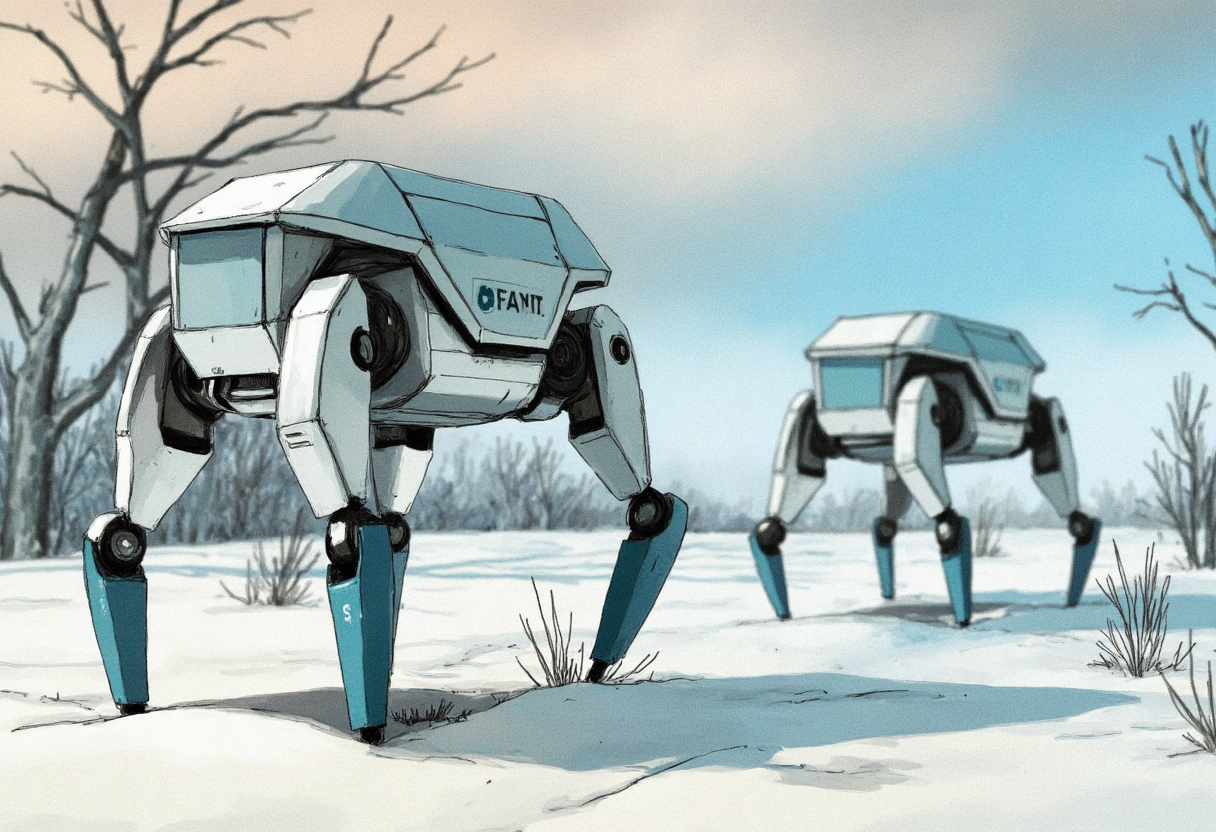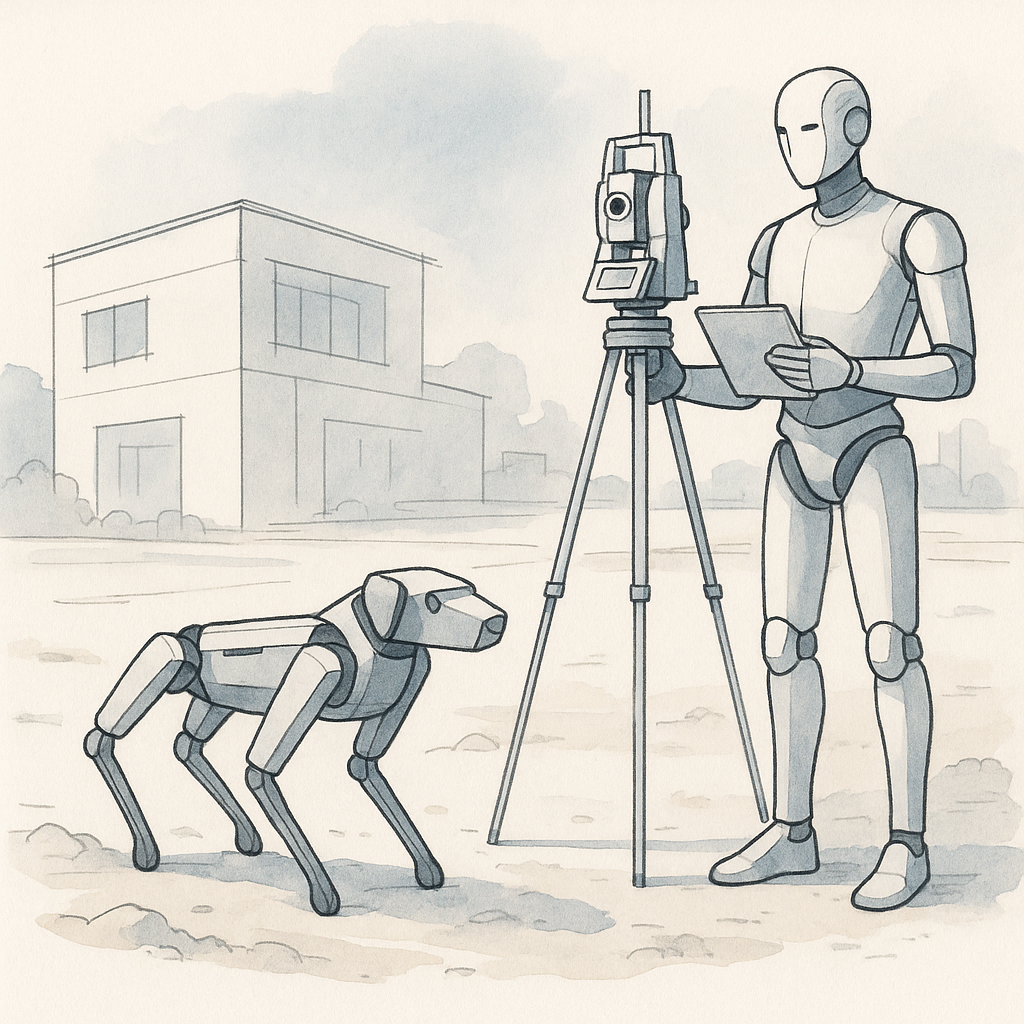TORONTO, Oct. 07, 2024 (GLOBE NEWSWIRE) — Nexus Industrial REIT (“Nexus” or the “REIT”) (TSX: NXR.UN) is pleased to announce the appointment of Mary Vitug to the Board ...
How Robotic Dogs and Humanoid Robots Are Set to Transform Land Surveying Technology




Land surveying, one of humanity’s oldest professions dating back to ancient Egypt, is poised for significant technological advancement. While aerial drones have already begun changing the industry, the next technological step appears to be ground-based: robotic dogs and humanoid robots capable of navigating complex terrain with high precision.
“I foresee robotic dogs or humanoid robots being able to go out and do the on-ground survey work with the same accuracy and precision, if not more so, than humans,” predicts Rob Cammack, CEO of SmartDrone.
From Drones to Robotic Assistants: Addressing Ground-Level Challenges
The surveying industry has adopted aerial drone technology for its efficiency in capturing data from above. However, limitations persist for ground-level data collection, a gap that robotic assistants are well-positioned to address.
This is already happening. Companies like AtkinsRéalis are deploying “Rad-Bots” (nicknamed Rock-E and Max) for surveying in hazardous environments such as nuclear facilities. These quadrupedal robots navigate uneven terrain, climb stairs, and maneuver around obstacles while collecting critical data that would otherwise put human surveyors at risk.
Similarly, GPC Systems Ltd has implemented robotic survey dogs for infrastructure inspection and environmental monitoring, potentially eliminating the need for costly traffic management during roadway inspections.
Current Capabilities and Limitations
Today’s robotic dogs are outfitted with a suite of sophisticated technologies, including advanced sensors and cameras for environmental awareness, LiDAR systems for precise measurement and mapping, and complex algorithms that enable autonomous navigation. Many are also built with ruggedized designs that allow for reliable, all-weather operation. However, despite these advancements, significant challenges remain before widespread adoption becomes feasible.
“Humanoids aren’t far enough along with range and ability to justify investment for our purposes yet,” Cammack acknowledges.
Current limitations include high initial costs, battery life constraints, and difficulties navigating extremely complex environments. While robotic dogs have made substantial progress in mobility, humanoid robots still struggle with the dexterity and balance required for certain surveying tasks.
Advancing Through Industry-Academic Collaboration
The development of these technologies accelerates through partnerships between private industry and educational institutions.
“We sponsor local university senior projects in mechanical and electrical engineering disciplines… this is where we explore beyond our main business focus,” Cammack explains.
This collaborative approach is increasingly common. Columbia University has partnered with Richtech Robotics to advance AI and robotics research, creating a pipeline for innovation that benefits both academic research and practical applications.
The National Security Dimension
Beyond commercial applications, there’s growing recognition of the strategic importance of domestic robotics development.
“It makes sense to have American companies building and operating robots in America and controlling that for national security reasons,” Cammack observes.
This perspective aligns with broader industry developments. American Robotics’ Scout System has received FAA approval for automated beyond-visual-line-of-sight drone operations without human operators on-site, a significant advancement with both commercial and security implications.
The Gradual Transition to Robotic Surveying


The integration of robotic assistants into surveying will likely be incremental.
“There are projects underway using robotic dog systems to augment our current methods,” Cammack reveals, suggesting initial implementations will focus on specific use cases rather than wholesale replacement of human surveyors.
The transition will probably begin with robotic assistants handling dangerous or repetitive tasks while human surveyors focus on complex aspects requiring judgment and experience. As technology matures, the balance may shift.
“I can see a future where either we provide these services for clients, or they purchase the hardware and implement it themselves,” Cammack predicts.
The Enduring Human Element
Despite advancing automation, the human element remains central to the surveying profession. The expertise of licensed land surveyors in interpreting data, making judgment calls, and understanding legal implications of boundary determinations cannot be easily replicated by machines.
“We developed our approach based on what would work for our target customer—professional licensed land surveyors—rather than simply examining existing drone technologies,” Cammack notes, emphasizing that technology development remains driven by human needs and expertise.
The most likely outcome is a collaborative relationship between human surveyors and robotic assistants, with each contributing their unique strengths to produce better outcomes than either could achieve alone.
The Future of Robotic Surveying
While the timeline for widespread adoption remains uncertain, the direction is clear. The combination of aerial drones, robotic dogs, and eventually humanoid robots will create new capabilities for mapping and measuring our world. From construction sites to disaster zones, from infrastructure inspection to environmental monitoring, these technologies promise to make surveying safer, more accurate, and more efficient.
For an industry that has evolved from ancient Egyptian rope stretchers to GPS-guided total stations, autonomous robotic assistants represent a natural progression applying the best available tools to the fundamental need to measure and understand our physical world.
As novel as robotic dogs and humanoids might seem today, they may soon become as common on construction sites and survey projects as the drones that preceded them.
Similar Articles
Explore similar articles from Our Team of Experts.


SANTA BARBARA, CALIFORNIA, UNITED STATES, August 11, 2024 /EINPresswire.com/ — Perry Lieber, a prominent figure in the real estate and home construction industry, is redefining standar...


“It’s better to have it in the contract and not need it than not have it at all when you need it,” advises Lisa Colon, Partner at Saul Ewing and a construction law attorney...


ELMSFORD, N.Y., June 14, 2024 (Newswire.com) – DLC, one of the nation’s largest private owners and operators of open-air shopping centers, has completed the recapitalization and refi...


Introducing Abbey Busch: The Scion of the Revered Busch Family Dynasty joins the Powerhouse South Florida Real Estate Brokerage Team- The Starboard Group DELRAY BEACH, Fla., June 18, 2024 (N...




